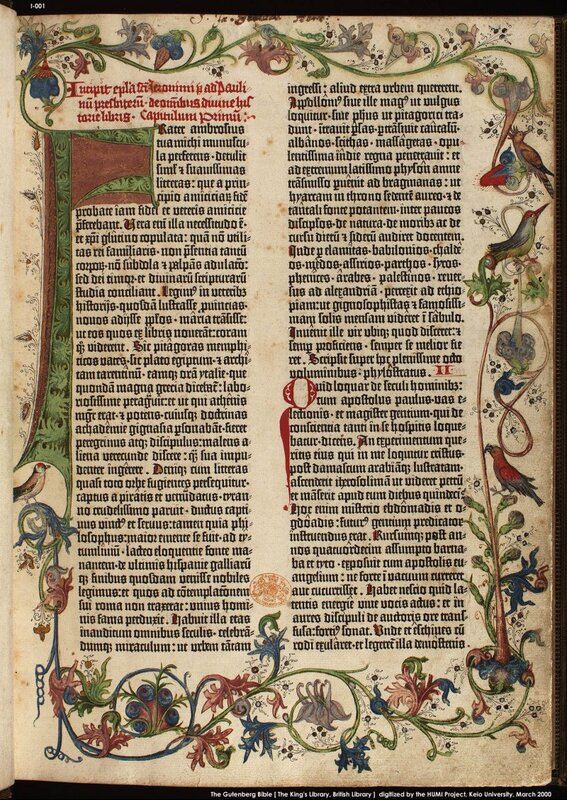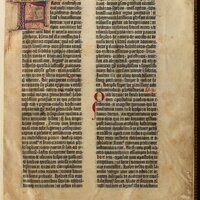Early movable type
Type:
Printed materials
Date:
Eleventh through fifteenth centuries
Description:
Movable type is a technology that allows printers to arrange movable components (often with a single character) within a frame, ink the characters, print a page, and then rearrange and reuse the same characters. Bi Sheng (990–1051) from the Hubei region of China is credited with originating the earliest movable type in the mid-eleventh century. Although his technique for baking clay type is recorded in an eleventh-century collection of essays from 1088, no movable-type prints or components have survived from this era.
Around 1234, the Goryeo Dynasty of Korea was the first to print books with metal movable type. The oldest extant book printed with metal movable type is the Jikji, printed in 1377.
In Mainz (Germany), Johannes Gutenberg developed a metal movable-type printing press, which revolutionized the distribution of books and other printed materials throughout Europe. Among the earliest books mass-produced with Gutenberg's technology were the Gutenberg Bibles of the 1450s, some printed on paper and some on parchment. They preserved much of the aesthetic of the medieval manuscripts that preceded them, with many copies including illuminated initials added by hand.
Around 1234, the Goryeo Dynasty of Korea was the first to print books with metal movable type. The oldest extant book printed with metal movable type is the Jikji, printed in 1377.
In Mainz (Germany), Johannes Gutenberg developed a metal movable-type printing press, which revolutionized the distribution of books and other printed materials throughout Europe. Among the earliest books mass-produced with Gutenberg's technology were the Gutenberg Bibles of the 1450s, some printed on paper and some on parchment. They preserved much of the aesthetic of the medieval manuscripts that preceded them, with many copies including illuminated initials added by hand.
Relevant Textbook Chapter(s):
6,
10,
11
Repository and Online Resources:
• Flip through the Jikji on the website of the Bibliothèque nationale de France.
• Compare the paper and parchment copies of the Gutenberg Bibles at the British Library.
Tags:
East Asian,
Western European,
Artistic production,
Bible,
Latin,
Metalwork




